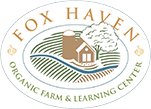Foragers 2: Week 2 Fruit Tree Grafting by Emma Williams

When we are children, life is full of wonder and surprise as we discover how things work. When we are adults, it becomes more complicated. Although things can still delight us, not knowing how things work can also become a source of embarrassment. So it is with some embarrassment that I tell you that before February’s Foragers 2 class I understood that it was possible to graft a branch from one fruit tree onto another, I did not understand that this is the primary way that fruit trees are grown.
If you had asked me where pear trees come from, I would have said that they grow from the seeds inside the pear fruit. This is true but also not the whole story. That is because – and I think we all know this already – offspring can be different from their parents. The cliché that “the apple doesn’t fall far from the tree” is actually not very apt. Also, grafting is much quicker than growing a whole tree from a seed.
After the class, I met a friend for brunch, and one of the first things I said was, “Did you know that all fruit trees are grown by grafting?”
She said, “Yes, but I don’t know how that happens.”
So, if you know nothing about tree grafting, or are vague on the details like my friend, continue reading for more information.
First, as with any type of surgery, start with a clean and sharp cutting tool.

The tree that forms the roots and trunk is called the rootstock, and the cutting from a tree that will bear fruit is called the scion. The process should be done in late winter/early spring, while the trees are still mostly dormant.
One lesson we learn again and again at Foxhaven is that plants and trees that tend to be considered weeds or nuisances are actually beneficial, medicinal, or both. For this class, we were working with Bradford pears as the rootstock; they grow quickly and abundantly but their fruit is not palatable for humans, which makes them undervalued.


(Before taking this class, I also would have thought that cutting a tree to the stump like this would kill it, but actually it has a lot of sugar stored in its root system to last the winter.)
Taylor is pointing to the cambium, the growing part of the trunk. The cambium cells of the rootstock and scion must be in contact with each other. When two trees grow together, it is called insoculation, which means “inward kissing.”
The picture below show scions grafted to the stump using the bark graft method, one of three methods we discussed. The scions were Keiffer pears, which only fully ripen when they have been stored for a few months.
 It’s important to wrap the graft carefully to keep the scions in place and prevent air from entering. Then wait and hope for about one month to find out if the graft has taken.
It’s important to wrap the graft carefully to keep the scions in place and prevent air from entering. Then wait and hope for about one month to find out if the graft has taken.
I live next to apple and peach orchards, and this lesson helped me see the trees anew. Perhaps what I am describing is more humbling than embarrassing? Food is such a basic and essential part of our lives, but the food system is complex and sometimes learning more just makes it seem more complex.
Finally, if this article has made you crave pears, go make the poached pears from the Joy of Cooking, or if you don’t have it this recipe is similar, or if you don’t want to use wine this recipe looks delicious.

Written by Emma Williams
